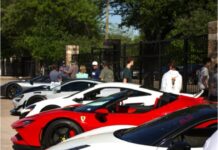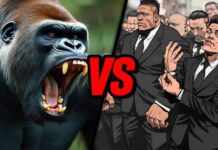60 years ago, an event familiar not only to Dallas residents but to the entirety of the U.S. occurred. On November 22, 1963, John F. Kennedy was gunned down in Dealey Plaza while riding in a convertible motorcade to the Dallas Trade Mart. Along with him was Texas Governor John Connally, who was wounded as well but was not fatally hit. Connally had injuries to his back, rib, and wrist, while Kennedy was hit in the throat, and most famously in the head. When the first shot ran out in the plaza, many people assumed firecrackers and could not imagine the possibility that Kennedy, who had been so lovingly welcomed Dallas thus far would be assassinated.
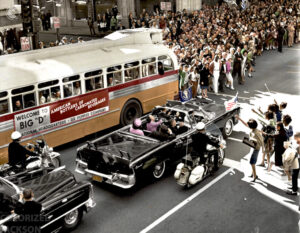
However, after everyone witnessed the assassination and came to an understanding of the gravity of the situation, pandemonium struck the plaza, with people ducking and running away. Seconds after the events had set in, police officer Marion Baker ran into the Texas School Book Depository, where many people had reported seeing a gunman and where Baker had seen birds flying off the building, presumably scared by gunfire. Officer Baker was then immediately met by the superintendent of the depository Roy Truly, and their frantic search for the gunman began. They began by running up the stairs in the back of the depository and on the second floor Baker caught a glimpse of someone and hollered at them asking them to “come here” and asking the superintendent if he knew the man.
Truly responded by replying “Yes he works here” and that man happened to be a certain Lee Harvey Oswald. Oswald was then spotted almost immediately after by another employee telling Oswald the President had been shot, Oswald replied with nothing. After this Oswald is said to have left the building and taken a bus, his actions that day forever altering world history and leaving behind an enduring mystery.
In this case, almost nothing can be 100% confirmed. The prime suspect, Oswald, was gunned down by nightclub owner Jack Ruby just two days later, forever causing invaluable testimony to be lost and making this case a mystery. However, with the evidence that is available at hand, one can make arguments for and against a lone gunman.
A Lone Wolf
The first camp, and the generally less popular one, is the idea of Oswald as the lone gunman. While many people do not believe the Warren report, a Government-led investigation in which they claimed one gunman, the idea that Oswald acted alone does have some credence behind it.
Firstly, it is almost certain that Oswald was at least one of the shooters in the assassination. The Carcano rifle found in the Book Depository was confirmed to be owned and ordered by Oswald, and when detectives came by Oswald’s house his wife directed the officials to where the gun was kept and found the spot empty.
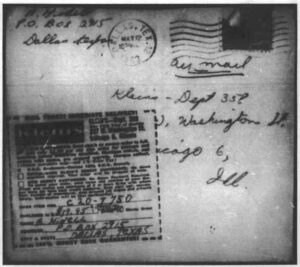
Along with this one of Oswald’s acquaintances, Wesley Frazier, took Oswald to work every day at the Depository and that morning Oswald brought a long paper bag with him inside the car. When asked about what was in it Oswald simply replied “curtain rods” supposedly for his boarding house in Dallas. However, not only were curtain rods already in the rooming house, but redecorating was not allowed in his rooming house and a pair of curtain rods Oswald did own were still in the garage when investigated by police. Also, when Frazier and Oswald arrived Oswald speedily ran away from Frazier with the curtain rods, a behavior Frazier noted to be unusual and untypical of Oswald. It’s believed Oswald probably did this in order to quickly hide the rifle in the Depository.
Along with this, Oswald was a known Marxist and communist sympathizer, he had spent various periods of time in the Soviet Union, had a Russian wife, was self-proclaimed a very political man, and thus most likely did not align with the US during the midst of the Cold War.
In addition to all this, Oswald had a background of being violent and being well-versed in marksmanship. He was a certified sharpshooter during his time with the Marines, had previously shot at far right-wing Major General Edwin A. Walker with the same rifle, and just the same day of the assassination shot Officer J.D. Tippit six times in the middle of the street and then tried to shoot another officer in the Texas Theater after.
Ultimately, the evidence is substantial for Oswald to be at least one shooter in the assassination, but is there any evidence to show he’s the only one? Well, one of the most interesting pieces of evidence is Oswald’s hiring at the Book Depository and more specifically the very roundabout nature of it.
Linnie Randle, the sister of Frazier and a neighbor Ruth Paine were having coffee together at another neighbor’s house and Paine had brought along Oswald’s wife. Oswald’s wife had mentioned to them Oswald’s current unemployment and Randle suggested they try and get him hired at the Book depository where Frazier currently worked. They proceeded to call Roy Truly, superintendent of the building, and only by a slim margin was Oswald hired at the depository. He was only hired due to the fall rush of textbooks lasting longer than expected and many of the other employees being busy on a plywood floor project. Truly had nothing permanent or long-term in mind for Oswald and it was only by slim chance that Oswald was even chosen to work in the depository building. When Oswald and another worker showed up for work Truly randomly chose one to stay in the depository and one to go to a warehouse away from the eventual motorcade route. Truly randomly and tragically chose Oswald to remain in the depository. If Oswald was somehow entangled in a conspiracy and the aim of the conspiracy was to have him employed at the book depository this sequence of events is a very strange and unusual way to do it.
Another part of the assassination people point to as being unusual is the choice to shoot Kennedy while he was moving. Kennedy was famous for often ditching the Secret Service and going into the crowd and standing for long speeches, often with the same lackluster security. If this had been a planned conspiracy why would the shooters choose to shoot Kennedy in a moving vehicle? The shooters could have discreetly hidden in the crowd and shot Kennedy point blank, or waited for one of his long speeches and shot him from a distance, a much more preferable and easier shot. Perhaps it was simply the right time and right place for only one man, that being Oswald, for the earliest time the motorcade route was published was in the Dallas Times Herald, a mere two days before the shooting.
Along with this, why would the conspirators choose that window of the depository one which was in clear view of everyone and one which he was spotted by multiple people If Oswald acted alone these less-than-ideal choices start to make sense.
Also, Oswald vehemently stated that he was “a patsy” or a being taken advantage of or someone being blamed for something. This seems like another attempt at Oswald to shed blame away for him for if there were others involved and Oswald was supposed to be the patsy. Oswald had multiple times to speak to the press and clear his name. Also if there was a conspiracy or multiple gunmen Oswald acted rather recklessly after the assassination. Instead of laying low and avoiding the chance of getting caught and jeopardizing his fellow conspirators he, as previously stated, murdered a police officer in broad daylight that same day and attempted to shoot another one. These are rather reckless acts which would make more sense if he was the only one who could be affected by his arrest.
Multiple Murderers
While there exists evidence that seems to lead to one gunman there obviously exists those of much of the contrary. Firstly, was the eyewitness of Lee Bowers, a railyard worker stationed directly behind the infamous grassy knoll. He claimed to witness someone suspiciously walking along the fence near the grassy knoll behind a car. Along with this, immediately after the shooting muddy footprints were found all along the grassy knoll fence as well the car that was there before was now missing. Many people in the plaza itself also saw smoke come from the knoll and reported hearing gunshots from near the knoll.
However, while this does seem to be crucial evidence it’s important to always take eyewitness accounts and hearing of gunshots with a grain of salt. The eyewitness interviewed gave a wide range of responses when asked where the shots came from and it should be noted that Dealey Plaza has an echo effect, causing even more confusion when trying to pinpoint where a gun was fired.
Besides eyewitness testimony there also exists tangible evidence from the crime scene which seems to indicate that two shooters were involved. The first is the movement of Kennedy’s head in the famous Zapruder film. In the Zapruder film Kennedy’s head seems to be thrust back and to the left with many people saying that this could have only been possible if the shooter was in front of Kennedy, or in the grassy knoll. However, when looking between frames 312 and 313 of the Zapruder film (the frame of the fatal headshot) Kennedy’s head does for a split second go forward. Many say this movement proves that the headshot came from behind and that the subsequent dramatic thrust back of Kennedy’s head came as a result of the bullet leaving Kennedy’s head (the Carcano rifle Oswald owned was a particularly strong rifle). However, others remained unconvinced and blamed the forward movement of Kennedy on the movement of Zapruder during the film.
Another piece of evidence often sighted by those who believe in multiple gunmen is a photo taken of the grassy knoll during the assassination in which some people believe to see someone among the trees. The supposed person has been nicknamed “the badgeman” after the supposed badge on his chest.
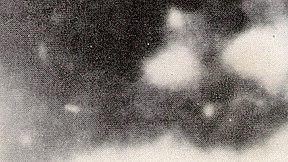
However, the photo is in black and white and of extremely low quality so it’s really hard to deduce anything from the photo let alone a figure. However, some people passionately believe that the photo captures the second gunman and thus proves the theory of a second gunman.
Besides the “badgeman,” one of the most often sighted pieces of evidence that seems to point to two gunmen is the location of the debris and blood from Kennedy’s head on the back of the motorcade. As seen in the Zapruder film, where Jackie Kennedy goes to the back of the motorcade to pick up pieces of Kennedy’s brain, Kennedy’s brain and blood landed on the trunk of the motorcade. Some attribute this to the forward movement of the motorcade, the explanation being that the debris originally went forward but the movement of the car caused it to land on the trunk rather than in front of the President. This seems to be supported by the Zapruder film, where a cloud of brain matter appears in front of the President’s head.
However, a little harder to explain is police officer Bobby Hargis’s testimony. Hargis testified that brain and blood from Kennedy landed on his bike and uniform. Bobby was one of the many motorbikes behind the President and many believe that the car and bike were not moving fast enough for the brain and blood to travel all the way to Hargis.
Alongside the blood and brain of Kennedy possibly the most popular point of contention is the infamous “magic bullet” theory. The magic bullet was first theorized by the infamous Warren Report which states that one bullet caused a significant amount of injuries to both JFK and John Connally. The theory proposes that the second shot fired by Oswald passed through President Kennedy’s neck into Governor Connally’s chest, went through his right wrist, and embedded itself in Connally’s left thigh. This means the bullet would have had to traverse the back brace of Kennedy, 15 layers of clothing, seven layers of skin, approximately 15 inches of muscle tissue, 4 inches of Connally’s rib, and shatter his radius bone. The supposed bullet the Warren Report claimed was this magic bullet was found on a gurney at Parkland Hospital and was in almost perfect condition.

Many tests by various organizations have been done to test the validity of the Warren Report’s theory, some tests claim to prove that the scenario is possible, while others claim adamantly that this scenario is not. Despite tests claiming the scenario is possible, many people hold major doubts about the magic bullet theory not only because of the impressive circumstances and damage of a single bullet but also because of the trustworthiness of the Warren Report itself.
The Warren Report
The Warren Report has major inconsistencies and untruths all over it. In the 26 volumes of the official Warren Report, frame 213, the infamous headshot, is never mentioned, a very key detail to leave out on a presumably expansive report of the assassination. Alongside this for the frames of the Zapruder film they did show in the report, the frames surrounding the headshot were reversed, making Kennedy’s head seem like it went more forward than it did backward.
The Warren Report was also very selective with who they interviewed and what evidence they pulled in order to help sway public opinion towards one gunman. The public was not the only one distrusting of the Warren report, in fact, even new president Lyndon B. Johnson was suspicious of the report, Johnson even telling Senator Richard B. Russell about his suspicions.
“But the commission believes that the same bullet that hit Kennedy hit Connally. Well, I don’t believe it.” -Richard B. Russell
“I don’t either.”- Lyndon B. Johnson
Jack Ruby
Finally, the fact that Oswald was assassinated just 2 days after his initial arrest by nightclub owner Jack Ruby caused theories of conspiracy to go wild.
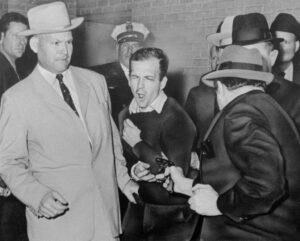
Ruby was seen as a suspect character by many people, aside from owning a nightclub, he was known to partake in illegal activities such as gambling, narcotics, and prostitution. Many people immediately pointed to Ruby as a member of the mob or another organized crime group and believed Ruby was trying to protect the said group by killing Oswald. The Warren Report however claimed there was no evidence of Ruby being connected to organized crime, this statement was seen by many as an attempt by the report to further convince the public of one gunman.
The reason Ruby claims he did this was because he did not want Mrs. Kennedy to suffer by going through a trial for the death of her husband and reliving the most horrific day of her life for months. However, many see this as a weak reason arguing that Mrs. Kennedy would have preferred to have a trial to figure out the truth about her husband’s death and receive closure and justice.
Ultimately the Kennedy assassination is an enigma. Just when evidence seems to conclude either one or the other, other evidence comes and seems to prove the other. This is why the case has eluded investigators and people alike for decades, today the public is split about 60% in favor of conspiracy, for there seems like an infinite number of possible scenarios which can never fully be proven or ruled out.
As the assassination turns 60 years old this year, and witnesses and those originally involved with the assassination begin to pass on, the likelihood of complete closure on this case seems evermore less likely, leaving the public only with the evidence at hand and the theories passed on by the previous generations.
Stay tuned to the Jesuit Roundup for more viewpoint news!




